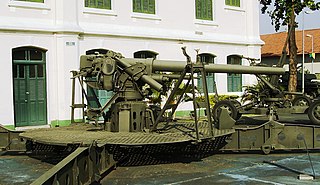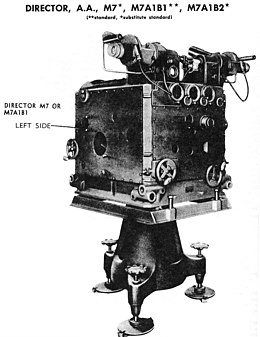 W
WThe 3-inch anti-aircraft gun M3 was an anti-aircraft gun developed from the earlier 3-inch M1917 and 3-inch M1918 guns which served throughout the 1930s, some into early World War II. By the time of the US entry into World War II, the 3-inch M3 was in the process of being replaced and may have seen action in the Pacific during World War II.
 W
WThe 3-inch gun M1918 was a United States 3-inch anti-aircraft gun that entered service in 1918 and served until it was largely superseded by the 3-inch anti-aircraft gun M3 in 1930, though the M1918 remained with some National Guard units until early in World War II. The M3 was subsequently replaced by the M1 90mm AA gun early in World War II, primarily during 1942. The M3 3" gun was later adapted for the anti-tank role, serving as the main armament of the M10 tank destroyer during World War II.
 W
WThe 37 mm gun M1 was an anti-aircraft autocannon developed in the United States. It was used by the US Army in World War II.
 W
WThe 75 mm gun M1916 was a US Army field artillery piece used during and after World War I. It was used as an anti-aircraft gun as well as a field piece. It originated as the 3-inch gun M1913, which was soon modified to the 3-inch gun M1916, which was later altered to the subject weapon.
 W
WThe 120 mm Gun M1 was the United States Army's standard super-heavy anti-aircraft gun during World War II and the Korean War, complementing the smaller and more mobile M2 90 mm gun in service. Its maximum altitude was about 60,000 ft (18,000 m), which earned it the nickname stratosphere gun.
 W
WCounter rocket, artillery, and mortar, abbreviated C-RAM or counter-RAM, is a set of systems used to detect and/or destroy incoming rockets, artillery, and mortar rounds in the air before they hit their ground targets, or simply provide early warning.
 W
WA director, also called an auxiliary predictor, is a mechanical or electronic computer that continuously calculates trigonometric firing solutions for use against a moving target, and transmits targeting data to direct the weapon firing crew.
 W
WThe M45 Quadmount was a weapon mounting consisting of four of the "HB", or "heavy barrel" .50 caliber M2 Browning machine guns mounted in pairs on each side of an open, electrically powered turret. It was developed by the W. L. Maxson Corporation to replace the earlier M33 twin mount. Although designed as an anti-aircraft weapon, it was also used against ground targets. Introduced in 1943 during World War II, it remained in US service as late as the Vietnam War.
 W
WSkysweeper was an anti-aircraft gun deployed in the early 1950s by both the U.S. Army and U.S. Air Force. It was the first such gun to combine a gun laying radar, analog computer (director) and an autoloader on a single carriage.
 W
WThe M61 Vulcan is a hydraulically, electrically or pneumatically driven, six-barrel, air-cooled, electrically fired Gatling-style rotary cannon which fires 20 mm rounds at an extremely high rate. The M61 and its derivatives have been the principal cannon armament of United States military fixed-wing aircraft for sixty years.
 W
WThe M167 Vulcan Air Defense System (VADS) is a towed short-range United States Army anti-aircraft gun designed to protect forward area combat elements and rear area critical assets. It was also used to protect U.S. Air Force warplane airfields and U.S. Army helicopter airfields. The heart of the M167 was a variant of the M61 Vulcan 20×102 mm rapid-fire rotary cannon.
 W
WThe Phalanx CIWS is a close-in weapon system for defense against incoming threats such as small boats, surface torpedoes, anti-ship missiles and helicopters. It was designed and manufactured by the General Dynamics Corporation, Pomona Division, later a part of Raytheon. Consisting of a radar-guided 20 mm (0.8 in) Vulcan cannon mounted on a swiveling base, the Phalanx has been used by the United States Navy and the naval forces of 15 other countries. The US Navy deploys it on every class of surface combat ship, except the Zumwalt-class destroyer and San Antonio-class amphibious transport dock. Other users include the British Royal Navy, the Royal Australian Navy, the Royal Canadian Navy and the US Coast Guard .